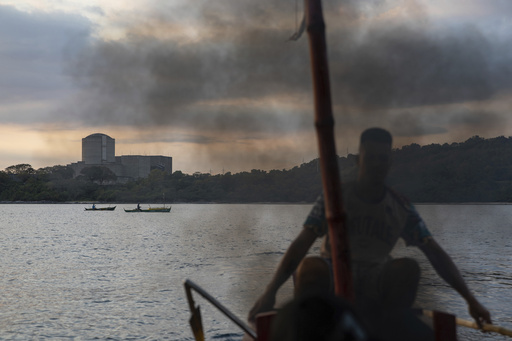
JAKARTA, Indonesia – The Philippines is home to Southeast Asia’s first and only nuclear power plant, which was completed forty years ago in Bataan, around 40 miles from the nation’s capital, Manila. Despite its construction in the 1970s, the facility has remained unused due to safety concerns and corruption, thus, never generating any energy. As Southeast Asian countries are increasingly pursuing cleaner and more dependable energy solutions, interest in nuclear energy is rising. Advocates consider it a viable response to climate change, as nuclear reactors do not release greenhouse gases that contribute to global warming, unlike fossil fuel-based energy. With new technologies emerging, the risks associated with radiation have been minimized, resulting in safer, cheaper, and more compact nuclear plants.
Faith Birol, the executive director of the International Energy Agency (IEA), highlighted the potential shift in the nuclear sector, stating that 2025 is projected to be a record year for nuclear electricity generation, attributed to new plants, national strategies, and an increasing interest in smaller reactors. Currently, developed nations such as the U.S., France, and Japan rely on nuclear energy, which constitutes approximately 10% of the global electricity output, with a capacity of 413 gigawatts across 32 countries. This figure surpasses the entire electricity generation capacity of Africa. The IEA emphasizes the need for expedited construction of new nuclear facilities within this decade to align with global objectives for reducing greenhouse gas emissions.
By 2035, Southeast Asia is expected to contribute to a quarter of the global energy demand growth, with fossil fuels largely dominating the region’s energy landscape. In response, several nations in the area are exploring nuclear energy options, typically producing around one gigawatt of power per installation, to enhance energy reliability and combat pollution. Plans are in place for Indonesia to establish 20 nuclear plants, while a Korean firm is evaluating possibilities to revitalize the inactive plant in the Philippines. Meanwhile, Vietnam is revisiting its nuclear ambitions, Malaysia is considering future nuclear ventures, and Singapore has inked a nuclear cooperation agreement with the United States. Countries such as Thailand, Laos, Cambodia, and Myanmar have also displayed interest in nuclear energy.
However, constructing nuclear power plants comes with significant challenges, such as high costs, lengthy construction timelines, and delayed profitability. Vietnam’s nuclear initiative faced a setback in 2016 due to escalating expenses, which reached $18 billion. Nevertheless, in January, Vietnam entered into a cooperative agreement with Russia to explore atomic energy options. On the finance front, Henry Preston from the World Nuclear Association indicated that international funding for nuclear energy has become more accessible, especially after 14 prominent financial institutions endorsed the goal of tripling the world’s nuclear energy capacity by 2050 during Climate Week NYC. Nonetheless, funding options remain scarce, as the World Bank has no ongoing support for nuclear development projects.
The World Bank openly acknowledged calls from stakeholders to investigate nuclear energy as a means to decarbonize energy and enhance supply reliability, noting ongoing discussions with its board and other stakeholders. Ultimately, the decision on whether to reconsider this stance rests with its member countries. Strengthening nuclear energy policies and regulations, which are currently deficient in many nations, could potentially encourage investment by providing greater assurance to financial backers.
Technological advancements are considered to make nuclear power increasingly affordable. Advocates have pointed to small modular reactors (SMRs), which can generate about one-third of the power of traditional reactors. These units can be constructed more swiftly and at lower costs than larger power facilities, adjusting their output to the specific needs of a site. Proponents assert that SMRs are inherently safer due to their simpler designs and enhanced coolant systems, allowing for extended response times during emergencies.
However, critics express skepticism concerning the projected cost-effectiveness, as most small reactors have yet to see widespread commercial implementation. Putra Adhiguna from the Energy Shift Institute in Jakarta highlighted that existing small reactors are operated by state-owned companies that often lack transparency. He noted that the cost of a proposed U.S. compact reactor project surged nearly 50% before being abandoned. The initial target was to provide electricity for 40 years at $55 per megawatt-hour, but expenses escalated to $89 per MWh.
Previous nuclear disasters have dampened enthusiasm for nuclear energy in the region. The 1986 Chernobyl incident in Ukraine impacted the Philippines’ decision to shelve its project, while the Fukushima disaster in Japan in 2011 led Thailand to halt its nuclear development initiatives. In 2018, the former Malaysian Prime Minister Mahathir Mohamad cited these catastrophic events as reasons for rejecting nuclear energy.
Challenges persist, including a concentration of nuclear technology markets among few countries, with Russia dominating about 40% of the global enriched uranium supply, posing a risk factor for future developments. Furthermore, the secure disposal of nuclear waste is crucial for public acceptance of nuclear power. For nations like Vietnam, a severe shortage of trained engineers and scientists is a significant barrier to reviving nuclear initiatives, with estimates indicating a need for roughly 2,400 qualified professionals.
Minister of Industry and Trade Nguyen Hong Dien remarked that the focus is not merely on re-establishing the nuclear program but also on cultivating a broader technological ecosystem for future nuclear power advancements.

